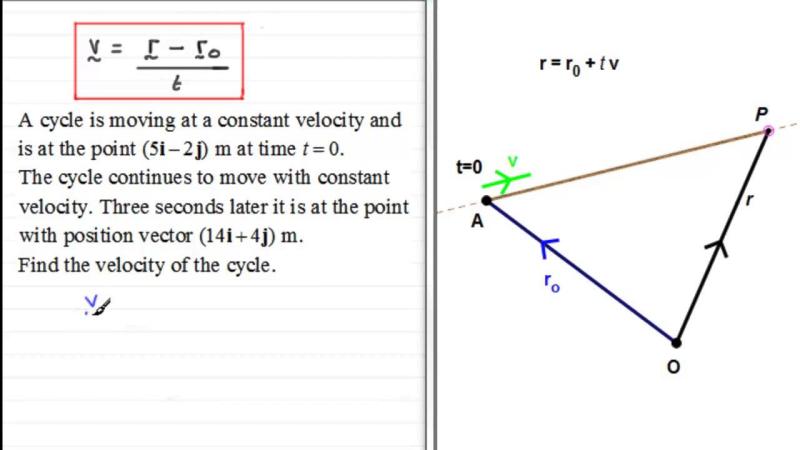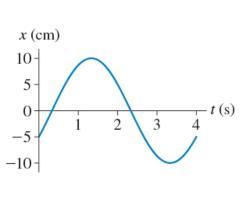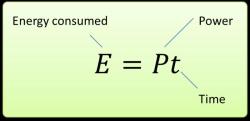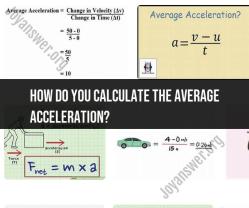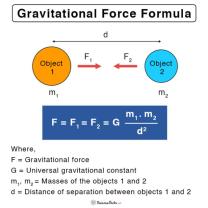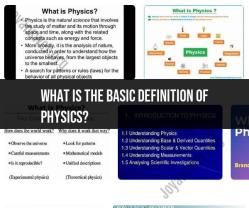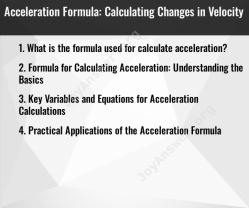How do you find the velocity vector?
To find the velocity vector of an object, you need to determine both the magnitude (speed) and direction of the velocity. Here's a step-by-step guide to finding the velocity vector:
1. Gather Data:
- Collect the necessary information about the object's motion, including the total distance traveled (D) and the time interval (Δt) during which the motion occurred.
2. Calculate the Magnitude of Velocity:
- Use the formula to calculate the magnitude (speed) of the velocity:
Magnitude of Velocity (V) = Total Distance Traveled (D) / Time Interval (Δt)
Make sure to use consistent units for distance and time (e.g., meters and seconds) to ensure the resulting velocity is in appropriate units (e.g., meters per second).
3. Determine the Direction of Velocity:
To calculate the direction of velocity, you'll typically use angles or vector components. The choice of method depends on the situation and the coordinate system you're working in.
If you're given the direction as an angle (θ) with respect to a reference direction (e.g., north or east), you can proceed directly to the next step. If not, you may need to use trigonometric functions to determine the angle.
If you have vector components (V_x and V_y) representing the magnitude of velocity in the x and y directions, you can calculate the direction angle (θ) using the following formula:
θ = arctan(V_y / V_x)
4. Represent the Velocity Vector:
- With the magnitude (speed) and direction determined, you can represent the velocity vector as follows:
Velocity Vector (V) = V * cos(θ) * i + V * sin(θ) * j
Where:
- V is the magnitude of velocity.
- θ is the direction angle measured from the reference direction.
- "i" and "j" are unit vectors representing the x and y directions, respectively.
5. Finalize the Velocity Vector:
- Combine the magnitude and direction to form the velocity vector. Express the velocity vector in appropriate units based on the units used for distance and time.
6. Interpret the Velocity Vector:
- The velocity vector represents the speed and direction of the object's motion. You can use this vector to analyze and understand the object's movement in a two-dimensional space (x and y directions).
Remember to maintain consistency in units and coordinate systems throughout the calculations to ensure the accuracy of the velocity vector. Finding the velocity vector is a fundamental concept in physics and engineering, allowing you to describe an object's motion in both speed and direction.
Finding the Velocity Vector: Methods and Formulas
Velocity is a fundamental concept in physics, representing the rate of change of an object's displacement. It is a vector quantity, meaning it has both magnitude (speed) and direction. The velocity vector provides essential information about an object's motion, allowing us to understand how it's moving and predict its future position.
Methods for Finding Velocity Vectors:
- Instantaneous Velocity:
Instantaneous velocity represents the object's velocity at a specific moment in time. It is calculated using the derivative of the position vector with respect to time:
v(t) = dr(t)/dt
where:
- v(t) is the instantaneous velocity vector at time t
- r(t) is the position vector at time t
- Average Velocity:
Average velocity represents the overall rate and direction of an object's displacement over a specified time interval:
Average velocity = Δr / Δt
where:
- Δr is the displacement vector, representing the change in position of the object
- Δt is the time interval over which the displacement occurs
Formulas for Calculating Velocity Vectors:
The specific formulas for calculating velocity vectors depend on the type of motion and the available information.
- Constant Velocity Motion:
For an object moving with constant velocity, the instantaneous velocity and average velocity are the same. The velocity vector can be calculated using:
v = d/t
where:
- v is the constant velocity vector
- d is the distance traveled
- t is the time interval
- Accelerated Motion:
For an object with non-constant velocity, the instantaneous velocity changes over time. The instantaneous velocity at a specific time can be calculated using:
v(t) = a(t) * t + v₀
where:
- a(t) is the acceleration vector at time t
- v₀ is the initial velocity vector
- t is the time interval
Calculating Velocity Vectors: Step-by-Step Guide
Identify the type of motion: Determine whether the object is moving with constant velocity or accelerated motion.
Gather necessary information: Collect the necessary data about the object's motion, such as initial position, final position, time interval, and acceleration (if applicable).
Choose the appropriate formula: Select the appropriate formula based on the type of motion and the available information.
Perform calculations: Substitute the known values into the chosen formula and perform the necessary calculations.
Interpret results: Analyze the calculated velocity vector, considering both magnitude and direction.
Mastering the Art of Velocity Vector Determination
Calculating velocity vectors requires a combination of theoretical understanding and practical application.
Conceptual Understanding: Thoroughly grasp the concept of velocity vectors, including their relationship to displacement, time, and motion.
Formula Mastery: Familiarize yourself with the various formulas used to calculate velocity vectors for different motion scenarios.
Problem-Solving Practice: Engage in regular practice by solving physics problems involving velocity vector calculations.
Visualization Techniques: Develop visualization skills to represent motion and interpret velocity vectors graphically.
Real-World Applications: Seek opportunities to apply velocity vector concepts to real-world phenomena and practical situations.
By mastering these aspects, you can gain proficiency in determining velocity vectors, enhancing your ability to analyze motion and solve physics problems effectively.
